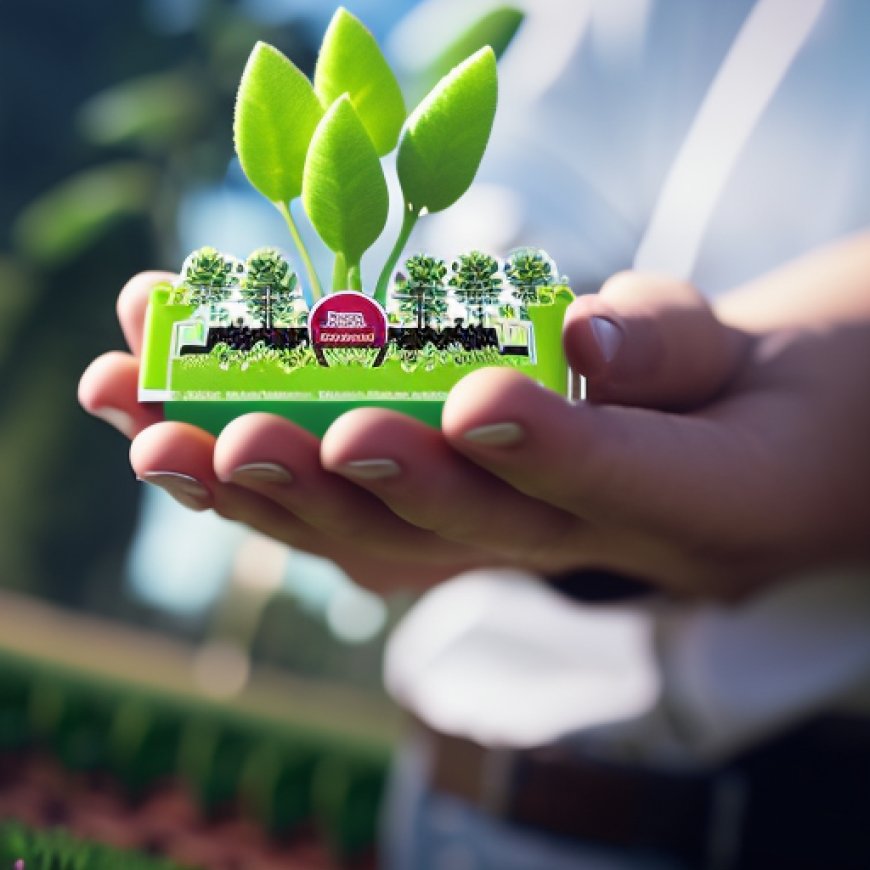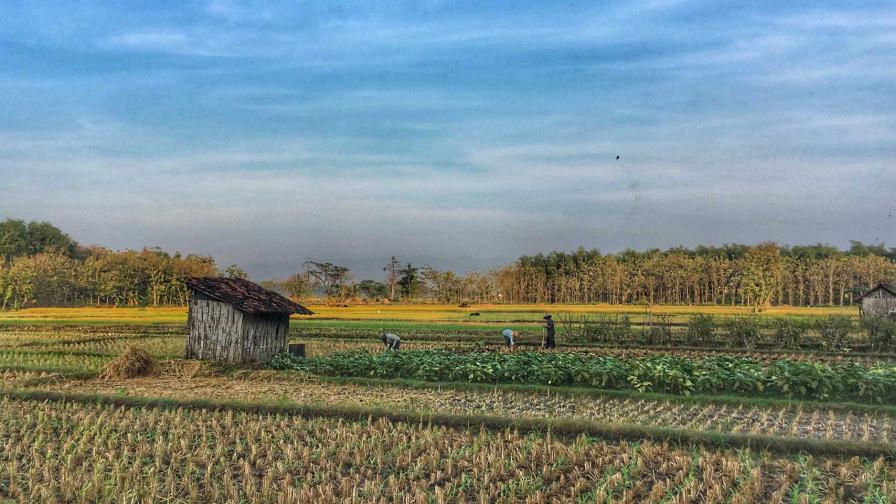Syngenta Celebrates 60 Years of Partnering with Growers to Support Indonesia’s Agriculture Development


Syngenta Indonesia Highlights the Critical Role of Agriculture in Sustainable Development

Syngenta Indonesia has released a comprehensive overview at a recent Media Gathering at Intercontinental Hotel Pondok Indah Jakarta, on the critical role agriculture plays in Indonesia and across the globe, emphasizing the sector’s significant contributions and vast potential for future growth. The event focused highlights the company’s commitment to support Indonesia’s agricultural sector and ensuring a sustainable future for the nation’s growers.
The Importance of Agriculture in Indonesia
- Agriculture contributes approximately 13-14% to the national GDP in Indonesia.
- About 30% of the Indonesian workforce is engaged in agriculture.
- An estimated 25 million smallholder growers play a crucial role in feeding both Indonesia and the world.
This highlights the sector’s role in sustaining livelihoods and driving economic development.
Syngenta’s Commitment to Indonesia’s Agricultural Sector
Syngenta Group CEO, Jeff Rowe, stated, “Indonesia holds a significant place in Syngenta’s global strategy. Thus, our commitment to advancing food security, boosting productivity, and enhancing growers’ wellbeing in this country is unwavering. By collaborating with local partners and stakeholders to promote innovation and adoption of sustainable practices, we are determined to contribute to the growth and resilience of Indonesia’s agricultural sector and meet the challenges of the future.”
Environmental Challenges and the Sustainable Development Goals
- Climate change
- Water scarcity
- Declining soil health
- Increasing pest pressure
These are some of the issues threatening Indonesia’s agricultural sustainability. In addition to that, Indonesia also has an urgent need to enhance food security due to its large population and vulnerability to climate change.
Syngenta’s Approach to Ensuring Sustainable Agriculture
Rowe further outlined Syngenta’s strategic approach to ensuring that Indonesian farmers have access to the best seeds, crop protection products, and agricultural technologies. These resources are designed to boost crop yields, safeguard harvests, and maintain the quality of produce, thereby contributing to the nation’s overall food security.
Empowering Growers Through Innovation
At the core of Syngenta’s mission, the main goal is to empowering growers to achieve higher productivity. Syngenta’s cutting-edge innovations, including digital farming solutions, AI and precision agriculture techniques are enabling farmers to optimize their operations. By increasing efficiency and reducing resource consumption, these technologies help farmers produce more with less, making agriculture more productive and sustainable. In addition to that, Syngenta’s closed loop farming ecosystem provides growers with better access to solutions – including agronomy knowledge, services, technologies, as well as access to agri input, financing, and market that will lead to improved profits.
Partnerships and Initiatives
Syngenta’s commitment to innovation is complemented by partnerships with local stakeholders. A prime example is the “10 Ton Community,” an initiative developed in collaboration with the Agricultural Offices across the country. The goal of this program is to help growers achieve yields of up to 10 tons per hectare, compared to the national average of 5-6 tons per hectare. Through good agricultural practices, comprehensive agronomic support, and peer-to-peer learning, Syngenta is unlocking the potential of Indonesia’s agricultural sector.
Conclusion
“At Syngenta, we are dedicated to advancing agricultural practices that support both economic growth and environmental sustainability. By working closely with growers, partners, industry stakeholders, government and the community, we are confident that we can unlock the full potential of agriculture for the benefit of all,” closed Rowe.
SDGs, Targets, and Indicators
SDGs Addressed in the Article:
- SDG 1: No Poverty
- SDG 2: Zero Hunger
- SDG 8: Decent Work and Economic Growth
- SDG 13: Climate Action
- SDG 15: Life on Land
Specific Targets Identified:
- SDG 1.2: By 2030, reduce at least by half the proportion of men, women, and children of all ages living in poverty in all its dimensions according to national definitions.
- SDG 2.3: By 2030, double the agricultural productivity and incomes of small-scale food producers, in particular women, indigenous peoples, family farmers, pastoralists, and fishers, including through secure and equal access to land, other productive resources and inputs, knowledge, financial services, markets, and opportunities for value addition and non-farm employment.
- SDG 8.5: By 2030, achieve full and productive employment and decent work for all women and men, including for young people and persons with disabilities, and equal pay for work of equal value.
- SDG 13.1: Strengthen resilience and adaptive capacity to climate-related hazards and natural disasters in all countries.
- SDG 15.3: By 2030, combat desertification, restore degraded land and soil, including land affected by desertification, drought, and floods, and strive to achieve a land degradation-neutral world.
Indicators:
- Indicator 1.2.1: Proportion of population living below the national poverty line, by sex and age.
- Indicator 2.3.1: Volume of production per labor unit by classes of farming/pastoral/forestry enterprise size.
- Indicator 8.5.1: Average hourly earnings of female and male employees, by occupation, age, and persons with disabilities.
- Indicator 13.1.1: Number of deaths, missing persons, and directly affected persons attributed to disasters per 100,000 population.
- Indicator 15.3.1: Proportion of land that is degraded over total land area.
Analysis:
The article highlights the critical role of agriculture in Indonesia and its contributions to the economy, employment, and food security. Based on the information provided, the following SDGs are addressed or connected to the issues discussed:
SDG 1: No Poverty
The article mentions that agriculture contributes to the national GDP and is a major source of employment, particularly in rural areas. By improving agricultural productivity and incomes, SDG 1’s target of reducing poverty can be addressed.
SDG 2: Zero Hunger
The article emphasizes the role of agriculture in feeding both Indonesia and the world. By increasing agricultural productivity and ensuring food security, SDG 2’s target of ending hunger can be achieved.
SDG 8: Decent Work and Economic Growth
The article highlights the importance of agriculture in driving economic development and providing employment opportunities. By promoting decent work and economic growth in the agricultural sector, SDG 8’s target can be fulfilled.
SDG 13: Climate Action
The article acknowledges the environmental challenges associated with agriculture, such as climate change and declining soil health. By adopting sustainable practices and enhancing resilience to climate-related hazards, SDG 13’s target of climate action can be addressed.
SDG 15: Life on Land
The article mentions the need to combat desertification, restore degraded land, and achieve a land degradation-neutral world. By promoting sustainable land management practices, SDG 15’s target of life on land can be achieved.
Based on the content of the article, the specific targets under these SDGs can be identified as follows:
Specific Targets:
- SDG 1.2: By 2030, reduce at least by half the proportion of men, women, and children of all ages living in poverty in all its dimensions according to national definitions.
- SDG 2.3: By 2030, double the agricultural productivity and incomes of small-scale food producers, in particular women, indigenous peoples, family farmers, pastoralists, and fishers, including through secure and equal access to land, other productive resources and inputs, knowledge, financial services, markets, and opportunities for value addition and non-farm employment.
- SDG 8.5: By 2030, achieve full and productive employment and decent work for all women and men, including for young people and persons with disabilities, and equal pay for work of equal value.
- SDG 13.1: Strengthen resilience and adaptive capacity to climate-related hazards and natural disasters in all countries.
- SDG 15.3: By 2030, combat desertification, restore degraded land and soil, including land affected by desertification, drought, and floods, and strive to achieve a land degradation-neutral world.
The article also mentions or implies indicators that can be used to measure progress towards the identified targets:
Indicators:
- Indicator 1.2.1: Proportion of population living below the national poverty line, by sex and age.
- Indicator 2.3.1: Volume of production per labor unit by classes of farming/pastoral/forestry enterprise size.
- Indicator 8.5.1: Average hourly earnings of female and male employees, by occupation, age, and persons with disabilities.
- Indicator 13.1.1: Number of deaths, missing persons, and directly affected persons attributed to disasters per 100,000 population.
- Indicator 15.3.1: Proportion of land that is degraded over total land area.
Table: SDGs, Targets, and Indicators
| SDGs | Targets | Indicators |
|---|---|---|
| SDG 1: No Poverty | 1.2: By 2030, reduce at least by half the proportion of men, women, and children of all ages living in poverty in all its dimensions according to national definitions. | Indicator 1.2.1: Proportion of population living below the national poverty line, by sex and age. |
| SDG 2: Zero Hunger | 2.3: By 2030, double the agricultural productivity and incomes of small-scale food producers, in particular women, indigenous peoples, family farmers, pastoralists, and fishers, including through secure and equal access to land, other productive resources and inputs, knowledge, financial services, markets, and opportunities for value addition and non-farm employment. | Indicator 2.3.1: Volume of production per labor unit by classes of farming/pastoral/forestry enterprise size. |
| SDG 8: Decent Work and Economic Growth | 8.5: By 2030, achieve full and productive employment and decent work for all women and men, including for young people and persons with disabilities, and equal pay for work of equal value. | Indicator 8.5.1: Average hourly earnings of female and male employees, by occupation, age, and persons with disabilities. |
| SDG 13: Climate Action | 13.1: Strengthen resilience and adaptive capacity to climate-related hazards and natural disasters in all countries. | Indicator 13.1.1: Number of deaths, missing persons, and directly affected persons attributed to disasters per 100,000 population. |
| SDG 15: Life on Land | 15.3: By 2030, combat desertification, restore degraded land and soil, including land affected by desertification, drought, and floods, and strive to achieve a land degradation-neutral world. | Indicator 15.3.1: Proportion of land that is degraded over total land area. |
Source: agribusinessglobal.com








